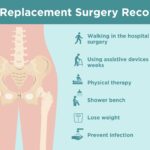Introduction
Public health strategies often focus on reducing unintended pregnancies, improving family planning access, and ensuring reproductive autonomy. Within this context, vasectomy has emerged as one of the most effective forms of permanent male contraception. The no scalpel vasectomy (NSV), developed in China in the 1970s and introduced worldwide in the 1980s, represents a milestone in men’s reproductive health. Compared to traditional vasectomy, NSV is faster, safer, less painful, and associated with quicker recovery, making it more acceptable for both patients and health systems.
From a public health perspective, no scalpel vasectomy is more than a surgical technique—it is a tool for population control, healthcare cost reduction, and gender equity in contraception. This article explores no scalpel vasectomy through the lens of public health, analyzing its benefits, challenges, and broader implications for communities and health systems.
The Global Burden of Unintended Pregnancies
Unintended pregnancies remain a significant public health challenge. According to the Guttmacher Institute, nearly half of all pregnancies worldwide are unintended, with profound social and economic consequences:
- Increased rates of unsafe abortion
- Higher maternal and neonatal morbidity and mortality
- Economic strain on families and healthcare systems
- Disruptions to education and career pathways
While contraception use has improved globally, male involvement remains limited. The burden of preventing pregnancy continues to fall disproportionately on women, through hormonal methods, intrauterine devices, and surgical sterilization. In this context, expanding the role of men through no scalpel vasectomy provides an equitable, sustainable solution.
No Scalpel Vasectomy as a Public Health Tool
1. Effectiveness in Contraception
No scalpel vasectomy boasts a failure rate of less than 1%, making it one of the most reliable contraceptive methods available. From a public health standpoint, widespread adoption could significantly reduce unintended pregnancies and related complications.
2. Accessibility and Simplicity
Unlike tubal ligation, which requires general anesthesia and operating room infrastructure, NSV can be performed in an outpatient clinic with minimal equipment. This makes it particularly valuable in low-resource settings.
3. Cost-Effectiveness
- One-time procedure with lifelong effectiveness
- Cheaper than female sterilization and long-term hormonal contraceptives
- Reduces public spending on maternity care, abortion services, and child health programs
4. Gender Equity in Contraception
Promoting no scalpel vasectomy addresses the gender imbalance in family planning. Currently, women bear the greater physical, financial, and emotional responsibility. By increasing male participation, NSV contributes to shared responsibility in reproductive health.
Adoption of No Scalpel Vasectomy Worldwide
Developed Countries
- United States: Vasectomy is used by about 6–9% of married men. Public health agencies encourage NSV as an alternative to female sterilization.
- Canada & UK: Vasectomy is more common, with higher acceptance among middle-aged men.
Developing Countries
- India: Initially promoted in the 1970s during population control campaigns, vasectomy faced stigma. More recent programs emphasize NSV as safer and less invasive.
- China: Pioneer of NSV, where it was integrated into national family planning strategies.
- Sub-Saharan Africa: Adoption remains low due to cultural barriers, misconceptions, and limited surgical expertise.
Barriers to Public Health Adoption
Despite its advantages, no scalpel vasectomy faces several barriers at the population level:
1. Cultural and Social Stigma
- Misconceptions equating vasectomy with castration or loss of masculinity
- Fear of sexual dysfunction and infertility anxiety
- Cultural norms that place responsibility for contraception on women
2. Lack of Awareness
Many men and couples are unaware that no scalpel vasectomy is simple, safe, and reversible in some cases.
3. Healthcare System Limitations
- Insufficient trained providers in rural areas
- Inadequate integration into family planning services
- Limited public funding for male sterilization compared to female methods
4. Policy and Programmatic Gaps
Public health initiatives often prioritize maternal and child health, leaving male reproductive health underfunded and underemphasized.
Public Health Benefits of Scaling Up NSV
1. Reduction in Maternal Mortality
By reducing unintended pregnancies, NSV indirectly decreases maternal deaths linked to unsafe abortions and high-risk pregnancies.
2. Lower Healthcare Costs
One vasectomy saves health systems thousands of dollars by preventing the costs associated with prenatal care, delivery, and childhood healthcare.
3. Family Economic Stability
Smaller, planned families improve parental investment in education, nutrition, and overall child well-being.
4. Promotion of Men’s Involvement in Reproductive Health
Public health experts stress that engaging men improves gender equality and fosters healthier family dynamics.
Case Studies in Public Health Implementation
India’s Male Sterilization Programs
In the 1970s, mass sterilization campaigns led to coercive practices, creating mistrust. More recent NSV programs emphasize voluntary participation, informed consent, and male engagement, improving acceptance in some regions.
China’s Integration of NSV
As the birthplace of no scalpel vasectomy, China successfully incorporated the technique into family planning services, training thousands of providers and normalizing male sterilization as part of community health initiatives.
Latin America’s Growing Acceptance
Countries like Brazil and Colombia have expanded NSV access through public health clinics, demonstrating rising male participation when services are affordable, safe, and promoted through awareness campaigns.
Strategies to Improve Public Health Adoption
- Education Campaigns
- Debunk myths about vasectomy and masculinity
- Highlight safety, effectiveness, and quick recovery
- Provider Training
- Ensure sufficient urologists and general practitioners are skilled in NSV
- Expand training in low-resource settings
- Policy Integration
- Include NSV in national reproductive health programs
- Subsidize procedures to encourage wider adoption
- Community Engagement
- Partner with local leaders, NGOs, and men’s health advocates
- Use testimonials from satisfied patients to reduce stigma
- Gender-Inclusive Family Planning
- Promote shared responsibility between men and women
- Emphasize the role of men in achieving reproductive justice
Ethical Considerations in Public Health Programs
When promoting no scalpel vasectomy at scale, ethical safeguards must be prioritized:
- Voluntary Participation: Avoid coercion, particularly in populations with histories of forced sterilization.
- Informed Consent: Ensure men understand permanence, risks, and alternatives.
- Privacy and Confidentiality: Safeguard patient information, especially in small communities.
- Equity of Access: Make services available regardless of socioeconomic status.
The Future of No Scalpel Vasectomy in Public Health
Advances in surgical technique, increased awareness, and shifting cultural norms suggest that NSV will play an increasingly prominent role in global family planning. Digital health campaigns, mobile vasectomy clinics, and telemedicine counseling are expanding access, particularly in underserved areas.
As public health policies evolve, integrating no scalpel vasectomy into comprehensive reproductive health frameworks can reduce unintended pregnancies, promote gender equity, and save healthcare costs.
Conclusion
From a public health perspective, no scalpel vasectomy is more than a clinical procedure—it is a cost-effective, equitable, and scalable strategy for improving reproductive health outcomes. Its adoption can reduce unintended pregnancies, lower maternal mortality, alleviate healthcare costs, and promote shared responsibility between men and women in family planning.
The main challenge remains overcoming cultural stigma, expanding access, and ensuring voluntary, ethical implementation. With proper policy support, education, and health system integration, no scalpel vasectomy could become a cornerstone of global reproductive health.
FAQs
1. Why is no scalpel vasectomy important for public health?
No scalpel vasectomy reduces unintended pregnancies, lowers healthcare costs, and promotes gender equity in family planning by involving men in contraception.
2. Is no scalpel vasectomy widely available in low-resource countries?
While highly effective and suitable for low-resource settings, availability is limited due to lack of trained providers, cultural stigma, and inadequate integration into national health programs.
3. How does no scalpel vasectomy benefit women’s health?
By preventing unintended pregnancies, NSV reduces the risks of maternal mortality, unsafe abortion, and complications from high-risk pregnancies, thereby improving women’s overall health and well-being.





